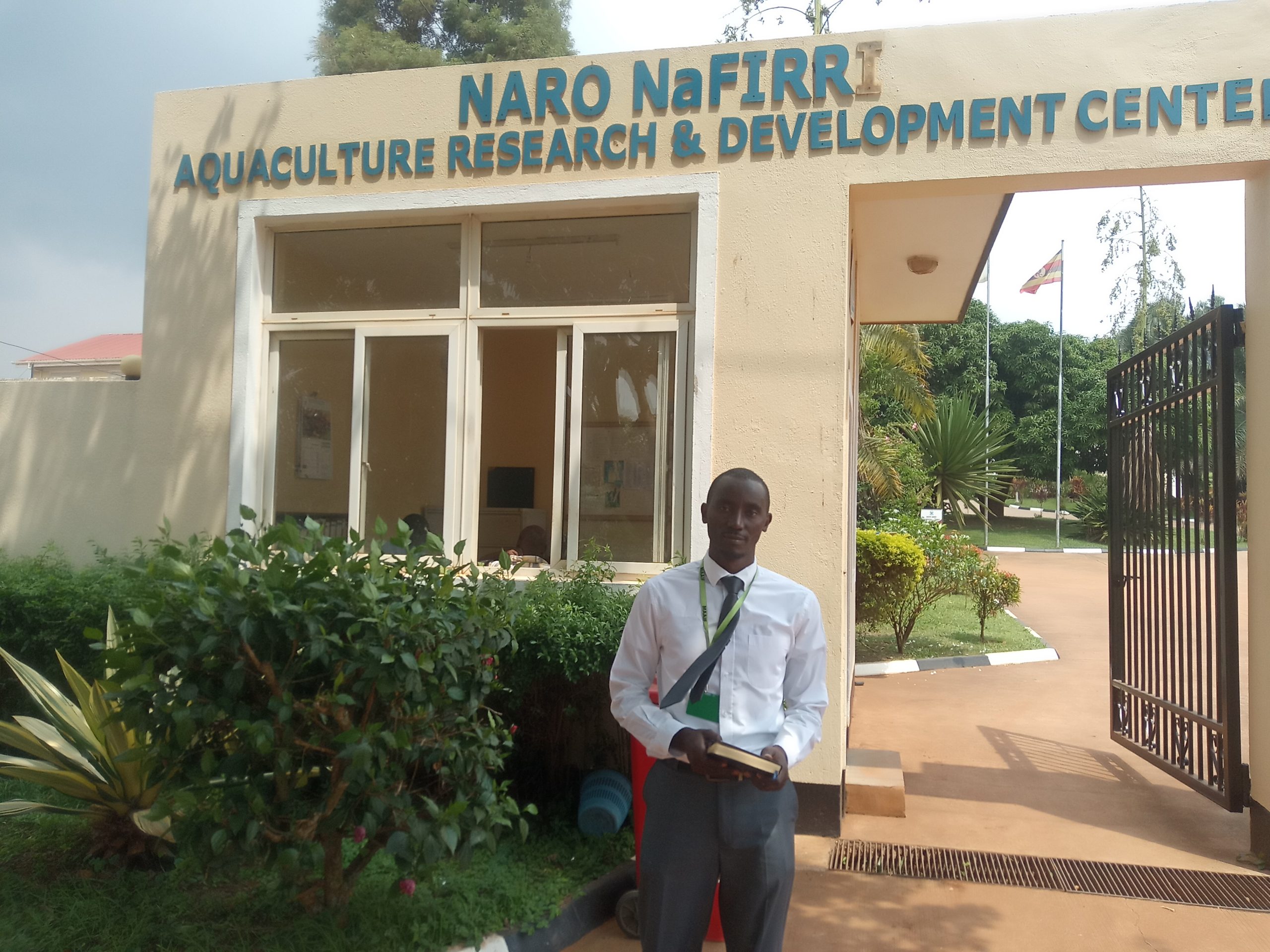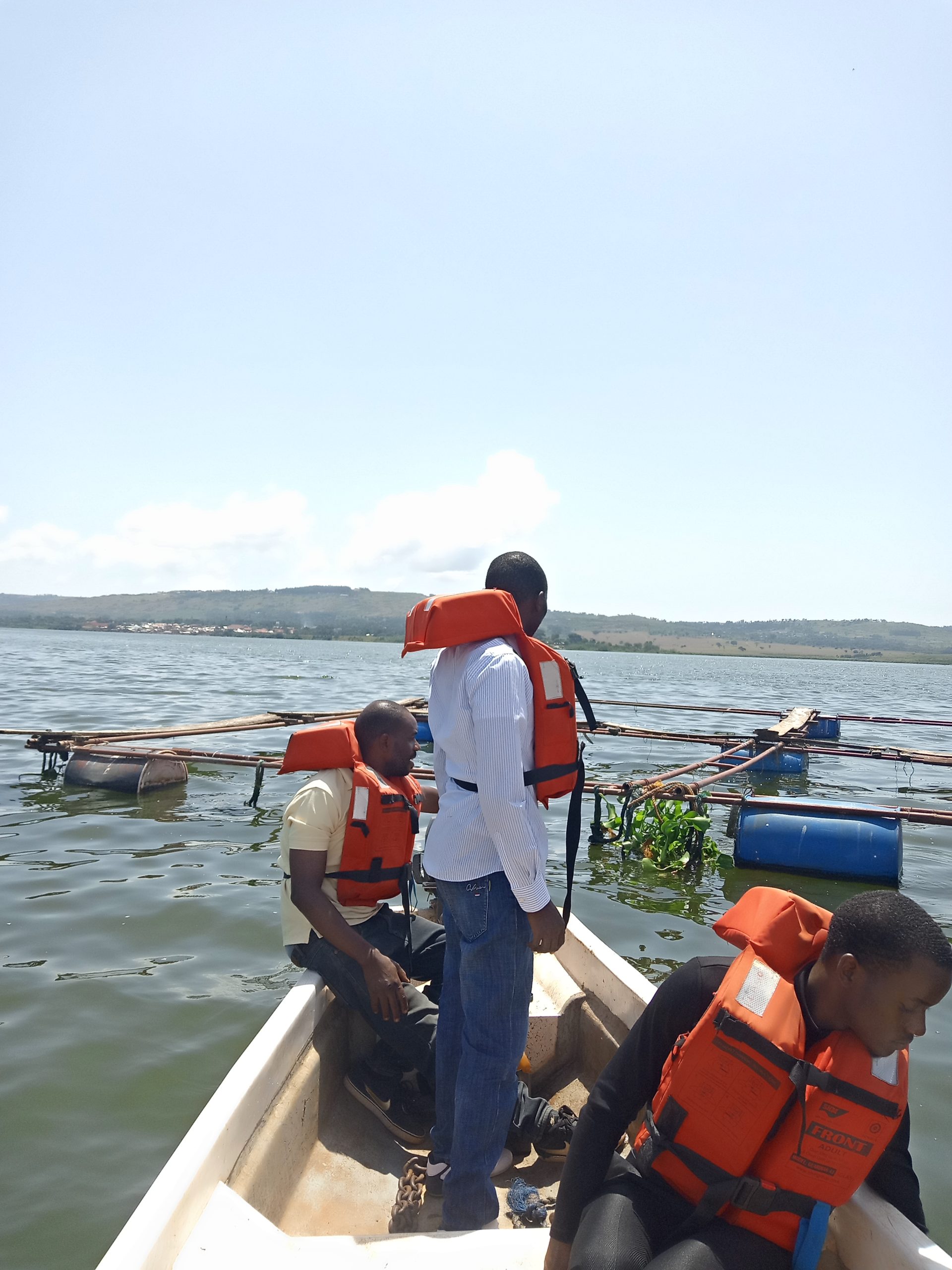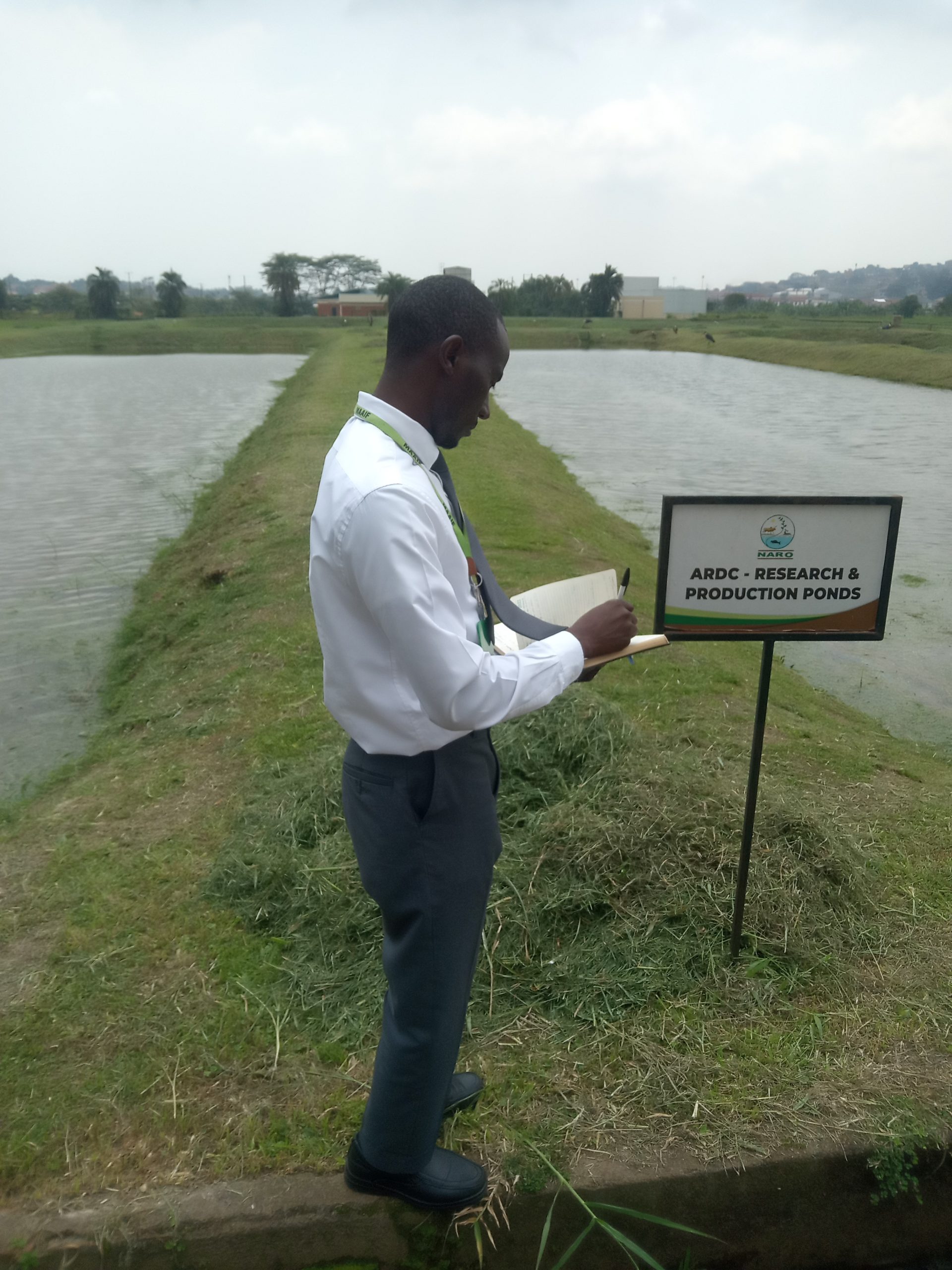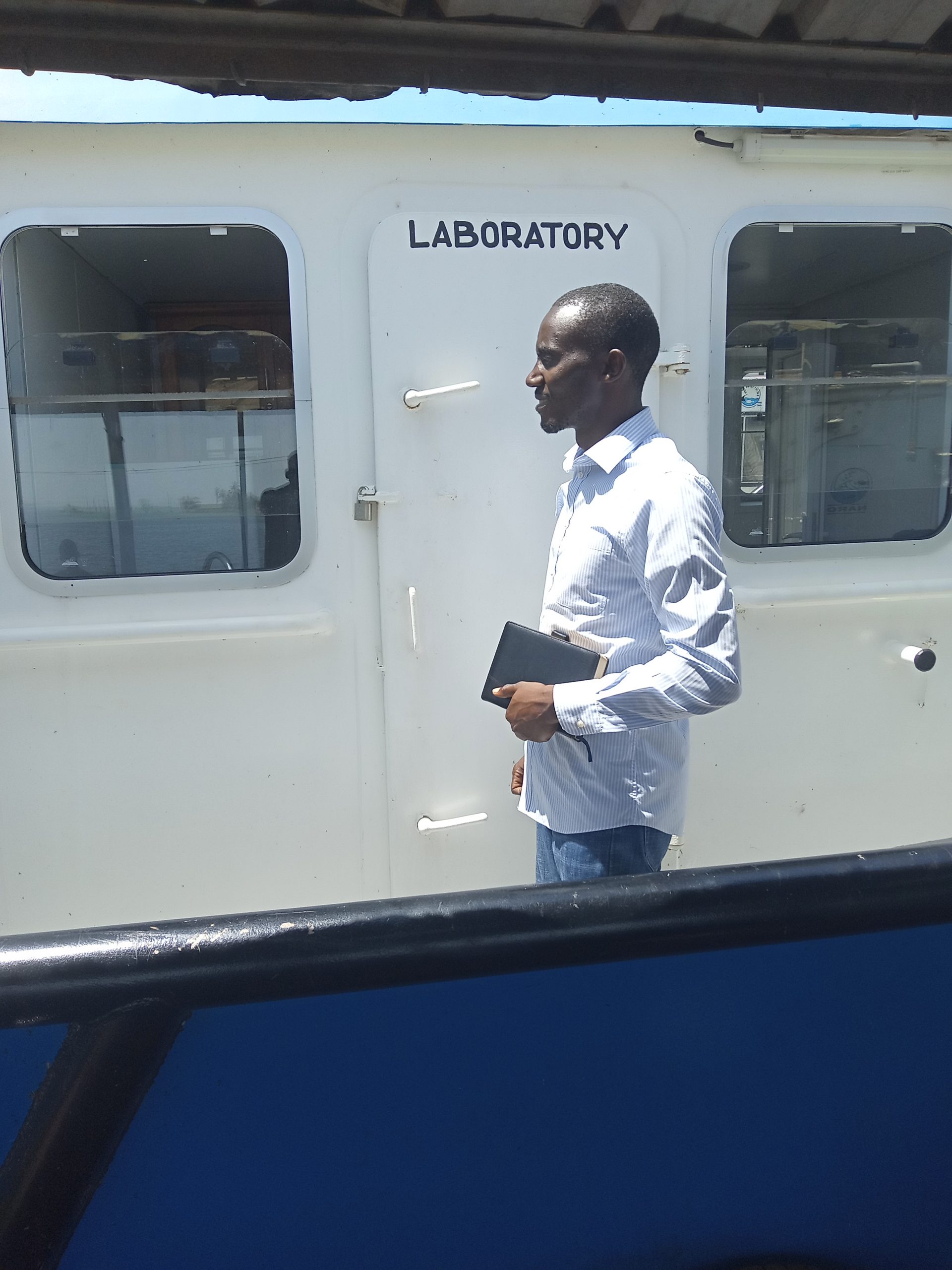The Fleming Fund is working with Uganda’s health care system to break down the barriers to disease surveillance by strengthening laboratory and diagnostic capacity in antimicrobial resistance (AMR) - leveraging in-country infrastructure and sustainability - for global health security.
Sustainable aquaculture: visiting national research fisheries in Uganda
Aquaculture is the controlled cultivation of aquatic organisms used to support the growing demand for fish products. This demand, however, has created a dangerous form of ‘intensive aquaculture’ with fish densely packed into cages. The frequent use of antimicrobials to combat pathogen outbreaks has led to growing antimicrobial resistance (AMR), which is transmitted from polluting nutrients in the water spilling over into the surrounding environment.
Animal Health Fleming Fund fellow Dr Israel Mugezi, hosted at the University of Edinburgh, UK, is a Veterinary Inspector at the Ministry of Agriculture, Animal Industry and Fisheries in Uganda. Dr Mugezi studies antimicrobial use (AMU) surveillance in aquaculture, and recently visited the Fisheries Institute in Uganda to learn more about the research being undertaken to combat AMR.
Exposed to new fish breeding practices and exploring disease surveillance at the Fisheries Institute, Dr Mugezi shares his insights into sustainable aquaculture practices, transferring expertise and promoting further research to tackle AMR.
As part of my Fleming Fund fellowship, I visited the National Fisheries Resources Research Institute (NaFRRI) in Uganda which is one of the seven public National Agricultural Research Institutes (NARIs) within the government’s National Agricultural Research Organisation (NARO) - a governing body coordinating research across the country.

Dr Israel Mugezi visiting the National Fisheries Resources Research Institute in Uganda.
NaFRRI aims to enhance fisheries research to improve the sustainability of fish production, economic growth, and food security. It also contributes towards eradicating poverty through the generation and dissemination of appropriate aquaculture technologies, knowledge, and information to support sustainable food production for a growing population.
My study builds upon existing research undertaken by NaFRRI in the Ugandan Wakiso and Jinja districts and promoting awareness focusing on biodiversity conservation with fish habitat management and innovative bioscience and aquaculture practices.
AMU and AMC in aquaculture
I was introduced to over ten fish species that are bred and sold commercially at the Aquaculture Research and Development Centre. In aquaculture breeding, the quality of fish seed is dependent on the production quality of its brood stock (mature fish bred with female fish) and being reared using appropriate husbandry practices has a significant impact on the shoals’ yield.

Dr Israel Mugezi receiving a demonstration of the aquaculture system at the Jinja fish facility.
At the ten fish farms I visited in Central Uganda, there was limited use of antimicrobial agents. Only one of the ten farms had used antibiotics after the fish had died. As the fish died shortly after being graded (the manual measurement and classification of the fish, carried out when they are young), this could be attributed to physical injury during the process, or existing water quality issues.
Poor water quality is the main reason for fish deaths in aquaculture. This often happens when the fish is young, as they are very vulnerable to oxygen changes in the water and the manual grading process can be harmful.
Something in the water
Increased fish stock densities lead to more fish feed per unit area, which can pollute the water’s nutrients and support the growth of bacteria. This can also be caused by using ground water in aquaculture systems; although sterile, it can create an effective environment for bacterial growth as fish feed is constantly added. I was taken through the fish hatchery and the water quality management processes undertaken to recondition the water, helping to rebalance nutrients and bacteria colonisation.
Water quality tests are routinely carried out at the Institutes’ managed fishponds; however, this is a rare practice among fish farmers. For instance, catfish are extremely sensitive to changes in water quality and young fish deaths can increase by 70%. Throughout the breeding process, a professional biosafety and biosecurity plan is essential to minimise the death of young fish.
Information from the fisheries disease and pathology department suggests that most fish deaths are caused by low or changing water quality. With some operators using antibiotics to reduce mortalities, the fisheries have strengthened their AMR surveillance systems with diagnostic services. This includes fish tissue preservation and digital imaging, involving tissue sample processing and microscopic examination to observe any abnormal changes.
AMR hazards
Fisheries are also reducing AMR by promoting the use of chicken organs as fish feed. The risk of bacterial transmission to the handlers is high without personal protective wear. The subsequent discharge of pond water in the surrounding water system can also spread the resistance bacteria to the environment, increasing the risk of AMR.

Dr Israel understanding the aquaculture pond set up at Kajjansi in the Wakiso District.
During the study, I realised that there were very few investigations into fish deaths. Following further discussion with the Principal Aquaculture Officer in the Ministry of Agriculture, Animal Industry and Fisheries it was agreed that there would be routine farm visits by the Fisheries Officer to urge farmers to investigate fish deaths. This would reveal the real cause of death, and the type and quantity of pathogens present – a new policy implemented by fellows during subsequent service delivery visits.
The cost of commercial feed is expensive for aquaculture farmers, and the feed does not always yield the expected growth rate requirement. This is one reason fish farmers look for alternative fish feed, like chicken organs.
Deadly fish
Fish dying of infectious diseases causing potentially harmful organisms transmitted through human food consumption is magnified by contaminated pond water during drainage in aquaculture practices. Routine microbial testing of the fish before they are sold should be carried out by the Government Fisheries Officers to identify pathogens present and assess the extent to which it poses an AMR risk.
The training of aquaculture farmers on water quality management would further alleviate the issue - such as working with major fish farms to improvise temporary reservoirs to help ensure that the testing is done before the used water is discharged into the environment - further reducing the AMR spread.
I would like to also work with Fisheries Officers in the Ugandan Ministry of Agriculture, Animal Industry and Fisheries to ensure that data from fish disease surveillance is digitally available for future reference and research.
Aquaculture policy
From the fellowship, I have gained insight into breeding fish using a minimal antimicrobial supply. As a veterinary practitioner, I learned about sample collection, preservation, and transportation during the fisheries disease outbreak investigation, and built my data analytical skills.

Dr Israel Mugezi consolidating his findings at the laboratory on a surveillance ship in Jinga.
As a central veterinarian in my country, I can now apply this new knowledge to contribute to fisheries policy discussions and start my own fish farm following the practice model for sustainable aquaculture.
Dr Diego Robledo, Roslin Research Fellow in Aquaculture, and Professor Till Bachmann, Chair of Molecular Diagnostics and Infection, Mentors of Fleming Fund Fellowship Scheme, University of Edinburgh, said:
“It has been a pleasure to support Dr Israel Mugezi during his time as a Fleming Fund Fellow with the University of Edinburgh. His fellowship has provided him with an in depth understanding of the challenges posed by AMR in a One Health context, and about the impacts of aquaculture on AMR in human health and in the environment."
“Israel is now very well placed to continue contributing to work at the national level in Uganda, that will inform policy interventions for the farmed fish industry aimed at reducing the impact of AMR for the benefit of the whole community."
More Like This
Programme Update
From Programme Update, Case Study: Breaking down AMR barriers in Uganda , Date: 05/08/2022
Uganda has received three pioneering laboratory machines to speed up the process of testing and treating patients for bacterial infections as part of a UK/Uganda partnership aimed at tackling drug resistance.